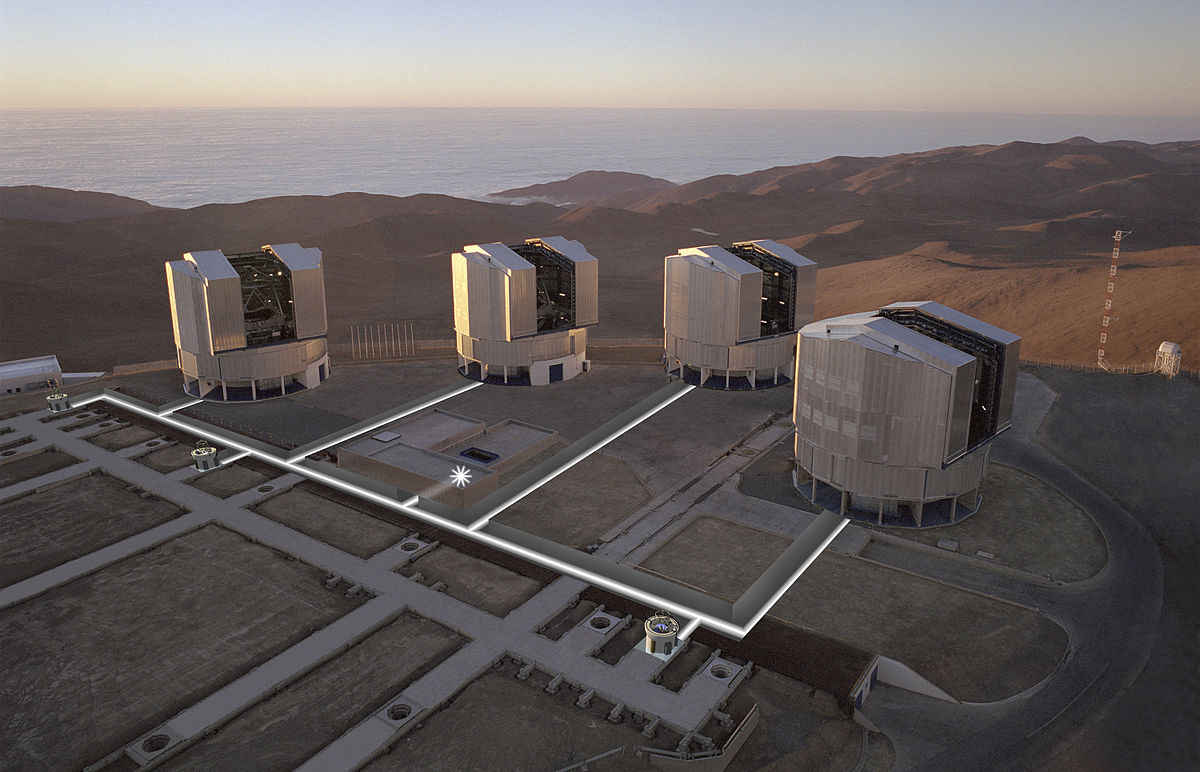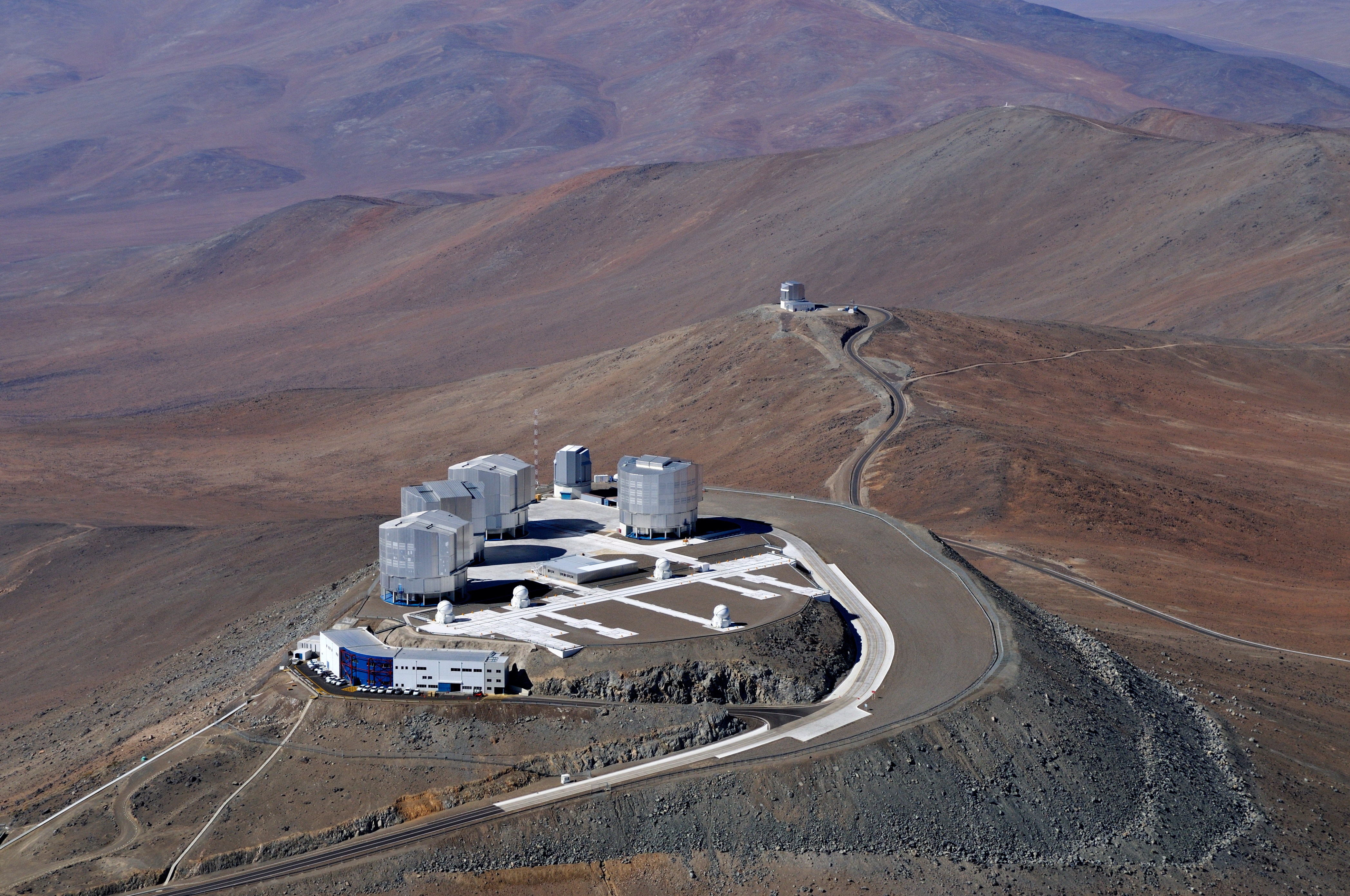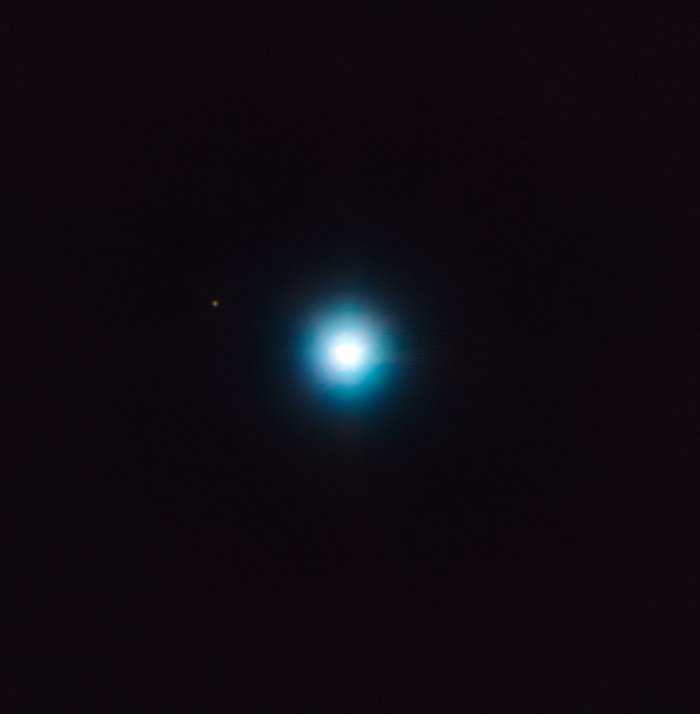
The Very Large Telescope, owned and managed by the European Southern Observatory (ESO) is located in Cerro Paranal, Chile. The facility consists of four individual rotating telescopes, Antu (Sun), Kueyen (Moon), Melipal (Southern Cross), and Yepun (Venus), named from the indigenous Mapuche language. The elevation of the site is 2,635 meters. Construction of the VLT began in 1991 and it made its first observation in 1998.

The Very Large Telescope is an optical telescope that is able to detect ultraviolet, visible, and infrared light waves. It uses Ritchey-Cretien reflectors and interferometry, a technology that creates higher resolution images by combining light wave signals underground. The telescope is used to view deep space objects as faint as magnitude 30, which means they are four billion times fainter than what is visible to the naked eye. Each of the four unit telescopes has an aperture of 8.2 meters. The facility also has four smaller auxiliary telescopes, each of which is 1.8 meters in diameter. When combined through interferometry, the telescopes can have an aperture of up to 200 meters in diameter. Each unit telescope has an angular resolution of 50 milliarcseconds (an arcsecond measures the angle between two objects to the observer). When combined by interferometry, this resolution is reduced to only 2 milliarcseconds, which the ESO defines as being able to distinguish two points on the ISS separated by the width of a single sesame seed from Earth or being able to read a newspaper on the Moon!

The VLT had made many discoveries including:
* discovered the most massive star, R136a1, which is 265x more massive than our Sun
* observed the afterglow of the furthest known gamma ray burst
* watches stars circle around the black hole at the center of our galaxy
* produced the first image of an exoplanet and measured the planet's mass
* discovered the Great Cold Spot on Jupiter
On the homepage of the website, you can view a live panoramic image of the Paranal Observatory which I have linked here with a map of the site, which includes its high-end "resort" called the
Residencia where astronomers and engineers live.
http://www.eso.org/public/usa/teles-instr/paranal-observatory/vlt/
The last thing I have for you today is an amazing set of images taken by the VLT. The link below is from the ESO and contains 682 unbelievable, groundbreaking images. I scrolled through all 14 pages on the website clicking on the ones that I wanted to learn more about (which was a LOT). And not very far into the collection, my eyes were tearing up. Sure, I'm an emotional person, but looking at these sparked something in me. Inspiration? Hope? Just pure awe? I don't know what it was, but these pictures of deep space that are possible through the abilities of our own humankind truly struck me.
I'll insert here some of my favorites:
http://www.eso.org/public/images/archive/search/list/1/?adv=&facility=31
Jupiter Spiral Galaxy NGC 1232
Red flames of Betelgeuse Jewel Box cluster
Eta Carinae Nebula Gas cloud being ripped
apart by the black hole at the
center of the Milky Way
Outbursts from a newborn star in the constellation Orion
Rosetta's Comet
Dust ring around the star Globular cluster 47 Tuc
HR 4796A in Centaurus
The protoplanet that orbits the Colliding galaxies
young star HD 100546 is seen
in the star's dust and gas
Exoplanet CVSO 30c Triple quasar QQQ 1429-008
Never forget to look up and beyond,
🌠
North Star Gazer 🔭
Works Cited
alienarka. "VLT Trailer 2009 (Paranal, Chile)." Online video clip. YouTube. 4 December 2009.
“Angular Measurements.” Cool Cosmos, IPAC-Caltech, coolcosmos.ipac.caltech.edu/cosmic_
classroom/cosmic_reference/angular.html.
Ferris, Timothy. Seeing in the Dark: How Backyard Stargazers Are Probing Deep Space and Guarding
Earth from Interplanetary Peril. Simon & Schuster, 2002.
Greenhaven Press. Exploring Science and Medical Discoveries: Astronomy. Thomson Gale, 2006.
Gregersen, Erik. “Very Large Telescope.” Encyclopædia Britannica, Encyclopædia Britannica, Inc., 7
Mar. 2016, www.britannica.com/topic/Very-Large-Telescope.
Nave, Rod. “Very Large Telescope (VLT).” HyperPhysics, hyperphysics.phy-astr.gsu.edu/hbase
/Solar/VLT.html.
“Very Large Telescope.” ESO United States, www.eso.org/public/usa/teles-instr/paranal-
observatory/vlt/.











